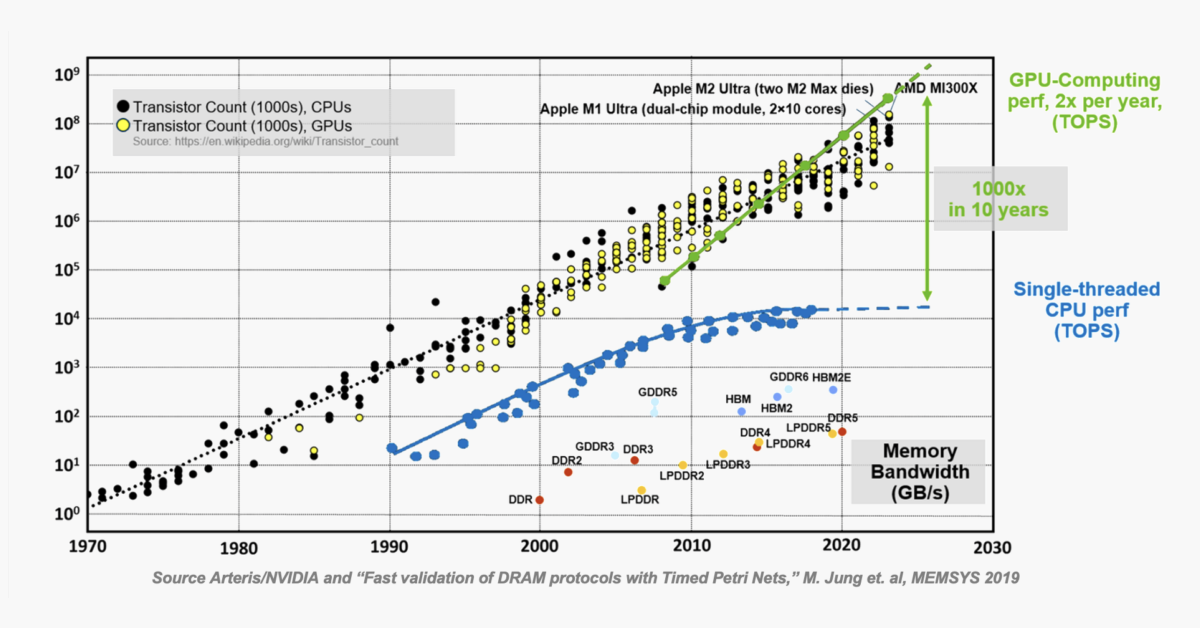SemiWiki: Arteris is Unleashing Innovation by Breaking Down the Memory Wall
by On Mar 14, 2024

There is a lot of discussion about removing barriers to innovation these days. Semiconductor systems are at the heart of unlocking many forms of technical innovation, if only we could address issues such as the slowing of Moore’s Law, reduction of power consumption, enhancement of security and reliability and so on. But there is another rather substantial barrier that is the topic of this post. It is the dramatic difference between processor and memory performance. While systems of CPUs and GPUs are delivering incredible levels of performance, the memories that manage critical data for these systems are lagging substantially. This is the memory wall problem, and I would like to examine how Arteris is unleashing innovation by breaking down the memory wall.
What is the Memory Wall?
The graphic at the top of this post illustrates the memory wall problem. You can see the steady increase in performance of single-threaded CPUs depicted by the blue line. The green line shows the exponential increase in performance being added by clusters of GPUs. The performance increase of GPUs vs. CPUs is estimated to be 100X in 10 years – a mind-boggling statistic. As a side note, you can see that the transistor counts for both CPUs and GPUs cluster around a similar straight line. GPU performance is delivered by doing less tasks much faster as opposed to throwing more transistors at the problem.
Many systems today are a combination of a number of CPUs doing broad management tasks with large numbers of GPUs doing specific tasks, often related to AI. The combination delivers the amazing throughput we see in many products. There is a dark side to this harmonious architecture that is depicted at the bottom of the chart. Here, we see the performance data for the various memory technologies that deliver all the information for these systems to process. As you can see, delivered performance is substantially lower than the CPUs and GPUs that rely on these memory systems.
This is the memory wall problem. Let’s explore the unique way Arteris is solving this problem.
